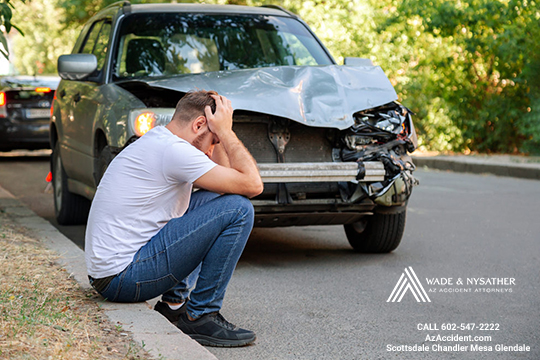Road Traffic Accident Checklist-Who wants to be involved in a car accident? No one does. But if and when it happens to you, it’s very crucial that you are prepared and know what to do. Let’s discuss your road traffic accident checklist in this article.
Most importantly, you should tell your insurer about the accident as soon as possible and remain calm while assessing the situation. Contacting your insurance company will allow them to inform you of any relevant details regarding insurance claims or other matters related to the incident.
But it’s a good idea to seek further information first. For example, researching the first steps of what to do after a road traffic accident can help you understand what is necessary to move forward with filing an insurance claim. This blog will cover a checklist of key steps you must take following a car accident.
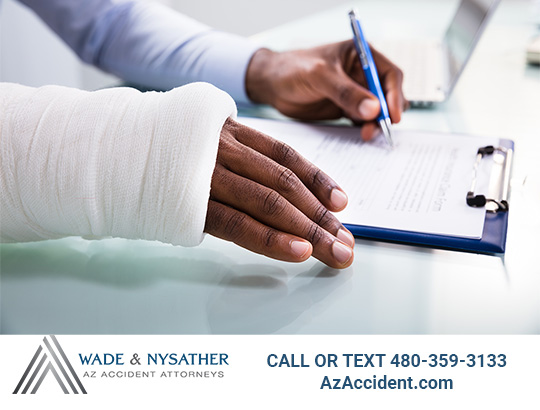
Road Traffic Accident Checklist: Examine Yourself for Injuries
First, see whether anyone, including yourself, needs medical assistance after a motor accident. Then, remember to remain calm and composed to stay in control of the situation. If you can do it safely, you should also check on other drivers and passengers involved in the accident.
When checking for injuries, look for any signs of pain or discomfort, such as cuts, bruises, swelling, or tenderness. Pay particular attention to head and neck injuries which can be serious even if there are no visible signs of trauma.
Symptoms of traumatic brain injury can include:
- Headaches
- Dizziness
- Confusion
- Mood changes
- Fatigue
- Insomnia
- Loss of consciousness or changes in vision
If any injuries are discovered, call 911 immediately. Even if no injuries are found, it’s still a good idea to call 911 to report the incident and get help.
Additionally, it’s important to ensure that all parties involved are safe and uninjured before leaving the accident scene.
Checking for injuries can help prevent further harm and provide peace of mind that everyone involved is safe. So be sure to provide as much detail as possible when speaking with emergency personnel.
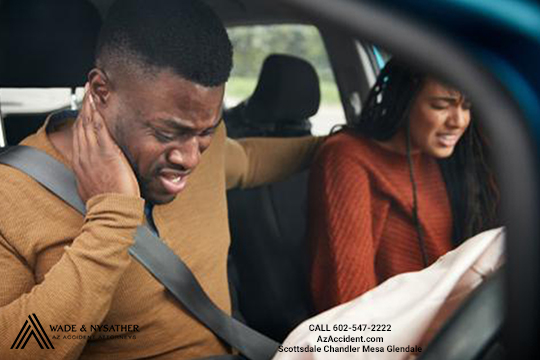
Road Traffic Accident Checklist: Check on the Well-Being of Your Passengers
Evaluate the mental, emotional, and physical health of other passengers in your car after an accident. If anyone is hurt, call emergency services.
You can ask a bystander for help if you can’t make a call yourself. And if it’s not safe to drive, leave the car and find somewhere safe.
Road Traffic Accident Checklist: Stay in a Safe Place and Await Help
Your safety is a priority in an auto accident, and you must observe the necessary precautions.
First, turn off the engine and turn on the hazard lights. This will alert other drivers that there has been an accident, and they’ll know to be cautious when approaching.
Furthermore, you can also use road flares to further warn other vehicles of the danger. And beware of bandit tow trucks offering help, as they may not be legitimate services.
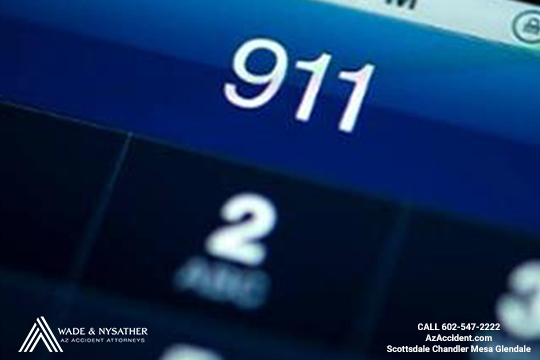
Road Traffic Accident Checklist: Call 911
As mentioned, calling 911 in the event of an accident is an essential step to take. Therefore, contact 911 as soon as possible after an accident occurs.
This way, a responding officer can investigate the factors that contributed to causing the accident and file a crash report.
Road Traffic Accident Checklist: Exchange Pertinent Information
A car accident often involves two cars or more. Therefore, if your vehicle collides with another, you should get pertinent information about the other car from its driver.
But while tension may run high, it’s best to avoid arguing. If you sense an emotional confrontation about to occur, do not engage and stay in your car until help arrives. But when conditions are neutral, exchange information with the other party in the collision.
Collect contact, insurance, and personal car information from the other driver. Information you should collect from the other party includes:
- Full name
- Insurance company
- Policy number
- Driver’s license
- License plate number
- Vehicle type, color, and model
But avoid discussing whose fault it was, as it’s up to the police or an insurance adjuster to determine later.
Road Traffic Accident Checklist: Document the Accident
When documenting an accident, the first step is identifying the officers and obtaining a copy of the accident report.
The police will have gathered relevant information: the time and where the incident occurred and any citations that may have been issued in the police report.
Also, take pictures of both cars involved in the accident, including their license plates, for identification purposes.
You should photograph any property damages that occurred from the accident. This damage includes skid marks on pavement or dirt, broken or damaged barriers or signs, and grooves in dirt or pavement. Then, record as much of the accident scene as you can.
By following these steps when documenting an accident, you can ensure that all relevant information is collected and preserved for future reference.
Having all relevant documents on hand can make a massive difference when settling a claim or filing a lawsuit.
Documentation should include police reports, medical records, photographs of the scene, witness statements, and other information you could use to prove fault or negligence.
It’s also important to keep track of any expenses related to the accident, such as car repairs or medical bills.
If your car has sustained significant damage, call a tow truck and have your car taken to a repair shop you trust.
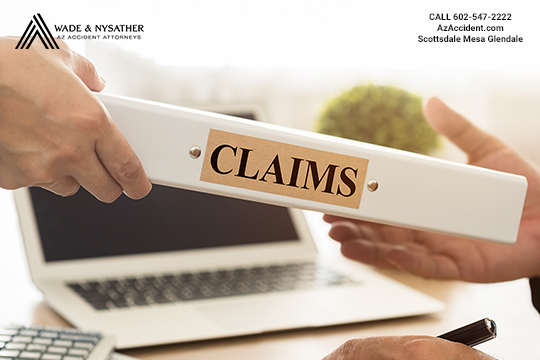
Road Traffic Accident Checklist: Talk to Your Insurer and Start Your Claim
You can phone an insurance agent and start your claim at the scene of the accident. Better yet wait before reporting your car collision and call for the Wade & Nysather No-Obligation No-cost Car Accident Legale Strategy Session (602) 457-2222.
Your agent will answer your questions and give instructions on how to proceed with the claims process.
They’ll interview you on where the accident occurred, how it happened, and the resulting outcomes. It is essential to understand the details of your policy, including what is covered and not covered, limits on coverage, and deductibles.
Additionally, you should check your policy’s declaration page to ensure all information is correct. If any information needs to be changed or updated, send a written request for change using certified mail tracking or return receipt so that you can prove it was sent.
Finally, hold onto all documentation about the accident.
Road Traffic Accident Checklist: Understand Your Bills
Look over your insurance policy carefully. Ensure all information on the declaration page is correct, including what is and is not covered.
If any information needs to be changed, send a written request for changes and keep proof of delivery. Call to verify anything if required.
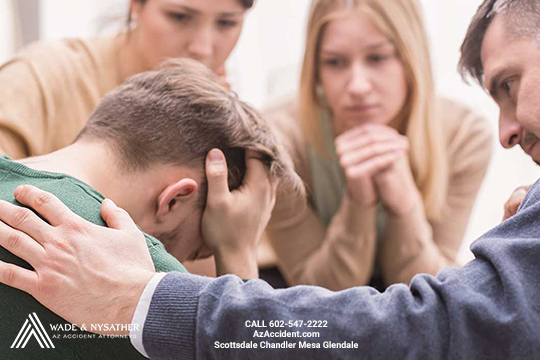
Make an Appointment with Your Doctor
Visiting the doctor after a car accident is crucial for your health and well-being. Fortunately, insurance often covers a doctor’s visit after an auto accident.
So don’t forego a trip to the doctor’s office and sacrifice your health. Don’t skip a health check even if you don’t feel anything is physically off.
Arrange for Car Repairs
After a car accident, your car will likely have a dent and scratches; in the worst case, it’s totaled.
You ought to seek a second opinion on the value of your car and compare it to the insurance company’s estimate. Then, to ensure that you get a fair deal, find an independent body shop to assess your car and work with you to determine a fair value on services.
Be aware that preferred body shops may receive payment through a devaluation check from the insurance company. Ask for an estimate on repairs from an independent body shop so that you understand how much repairs will cost before committing to them.
If you disagree with the amount of your loss, you can use an appraisal provision or file a claim on your coverage. However, if there is still disagreement, you may have to resolve it in court. In this case, it is best to discuss options with an attorney.
Discuss with a Legal Team
If you have been in a car accident, you may want to consider seeking legal action. An auto injury lawyer can provide invaluable assistance in navigating the claims and settlement process.
In addition, they can evaluate settlement offers, ensure all damages are recovered and comply with Arizona’s statutes of limitations.
What You Should NOT Do After a Car Accident
After a car accident, protect yourself and your rights. First and foremost, you should never flee the scene of an accident.
Additionally, you should not agree to a recorded conversation with the other driver’s insurance company without consulting with a lawyer first.
Furthermore, at the scene of the accident, you should not say that it was your fault or that you are okay if you’re unsure about either of these statements.
You also shouldn’t decline medical attention at the scene or after if offered by emergency personnel.
Lastly, don’t lose any documentation related to medical appointments and bills in case you need them later.
What Can You Do to Settle Disagreements After a Car Accident?
After you’ve completed some of the steps above, you may find that you don’t agree with who is at fault or about the monetary compensation you’ll give or receive.
If you don’t think you had your side of the story told, get in touch with us at Wade & Nysather, AZ Accident Attorneys. We have experienced car accident lawyers in Arizona who you can consult with in a No Cost No, Obligation Legal Strategy Session.
Contact us today, and let us help you stay vigilant to navigate your checklist on how to proceed after a car accident.
Get your FREE CHECKLIST on what you need to know after being in an accident HERE!

